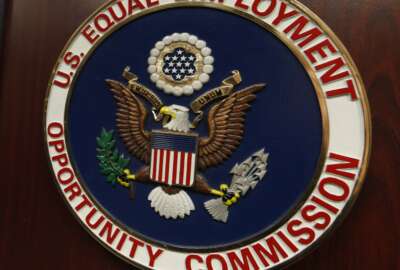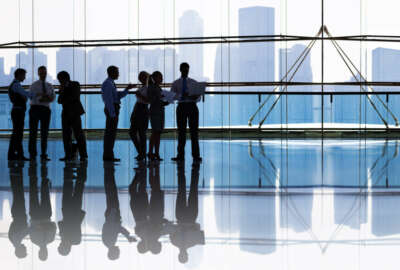‘There’s a lot to be done’: Federal groups push for greater SES diversity
Data from the Partnership for Public Service showed that people of color made up 16% of career SES members in 2007, increasing to 24.7% by 2022. But for senior...
Although employee demographics in the Senior Executive Service have diversified slightly in recent years, the improvements are not enough for some federal manager organizations.
Data from the Partnership for Public Service, published last month, showed that people of color made up 16% of career SES members in 2007, and by 2022, that percentage increased to 24.7%.
“That increase has not been at the rate that we would have liked to have seen, or even anticipated. There’s a lot to be done,” said Tyra Dent, president of the African American Federal Executive Association, in an interview with Federal News Network. “Having voices from other groups enriches solutions and strategies that the agency may be developing to pursue their mission. Absent [those voices], it really is a void.”

But despite disappointment, AAFEA, along with the Senior Executives Association, also see the latest findings from the Partnership for Public Service as an opportunity. Even having the data in the first place, a pursuit that the Partnership began in 2007, is significant, said Marcus Hill, SEA’s president.
“What gets measured gets done,” Hill told Federal News Network. “Now, I think it’s up to entities like the Office of Personnel Management, the Office of Management and Budget and Congress to take that data and actually put together an action plan to hopefully make it better.”
Of course, creating an action plan to improve federal diversity, equity, inclusion and accessibility (DEIA) is a massive undertaking — especially in the upper ranks of government, where diversity lags behind that of the federal workforce as a whole. But agencies are already working through some of those early steps, after the Biden administration required agencies to create strategic plans, as part of the 2021 DEIA executive order. Agencies’ DEIA plans vary in size and scope, depending on the individual end goals, but Hill said all agencies should focus on bringing DEIA to the attention of top leadership.
“While a lot of agencies have diversity and inclusion officers, in my mind, the agency head has to take that role on,” Hill said. “We really need to integrate the importance of this topic with those agency heads and help them to understand why it’s so important.”
Lower levels of the General Schedule are generally more diverse, and moving up the scale, the demographics become increasingly white and male. But that disparity presents agencies with an opportunity, Hill said, to consider more internal candidates to hire into the SES whenever positions open up. Since SES members generally skew older, more are now becoming retirement-eligible.
Data from the Partnership showed that the number of career SES separations is on an upward trajectory, most recently with 903 members leaving the SES in fiscal 2022. The vast majority, somewhere between 65% and 75% of those separations each year, are due to retirement.

That trend likely means more openings in the SES are coming for agencies. To fill those roles, specifically, agencies can look at internal employees who have already gone through SES candidate development programs, and who are already certified to take on the career leadership positions.
“Agencies have an opportunity to develop internal pipelines within their organization, where they are intentional about developing and preparing leaders within their agency,” Dent said.
“When it comes time for an agency to fill the position, some agencies don’t necessarily turn to that list of certified candidates that they invested in to fill those positions,” Hill added. “Sometimes, the answer is right there in your own backyard.”
In addition to broadening consideration on the tail end, Dent and Hill said it’s just as important to diversify applicant pools on the front end, too, to reach a more diverse workforce, and ultimately a more diverse SES cohort down the road.
“A lot of that has to do with holding the hiring managers and appointing authorities accountable for ensuring that there is a broad pool of applicants to pull from, and then making the appointments accordingly,” Dent said.
The road is a long, and often slow one, but there are steps that agencies can take immediately to start looking at this more as well, Dent said. Diversifying the members of the interview panels who consider federal job candidates, for instance, can help bring in a bigger diversity of perspective.
“You’re bringing in not only racial diversity, but diversity of thought and experience,” Dent said. “And that just enriches the whole process and brings to bear things that others may not see through their lens.”
And sometimes, it’s even simpler than that — for Hill, the road to progress on DEIA starts with agencies acknowledging that the limited diversity a problem in the first place.
“Quite frankly, when you look at the statistics, there has been no significant change over time,” he said. “That’s why it’s so critically important to … bring those diversities of thoughts, perspectives and experiences, in terms of problem-solving, and helping agencies continuously improve.”
Copyright © 2025 Federal News Network. All rights reserved. This website is not intended for users located within the European Economic Area.
Drew Friedman is a workforce, pay and benefits reporter for Federal News Network.
Follow @dfriedmanWFED






